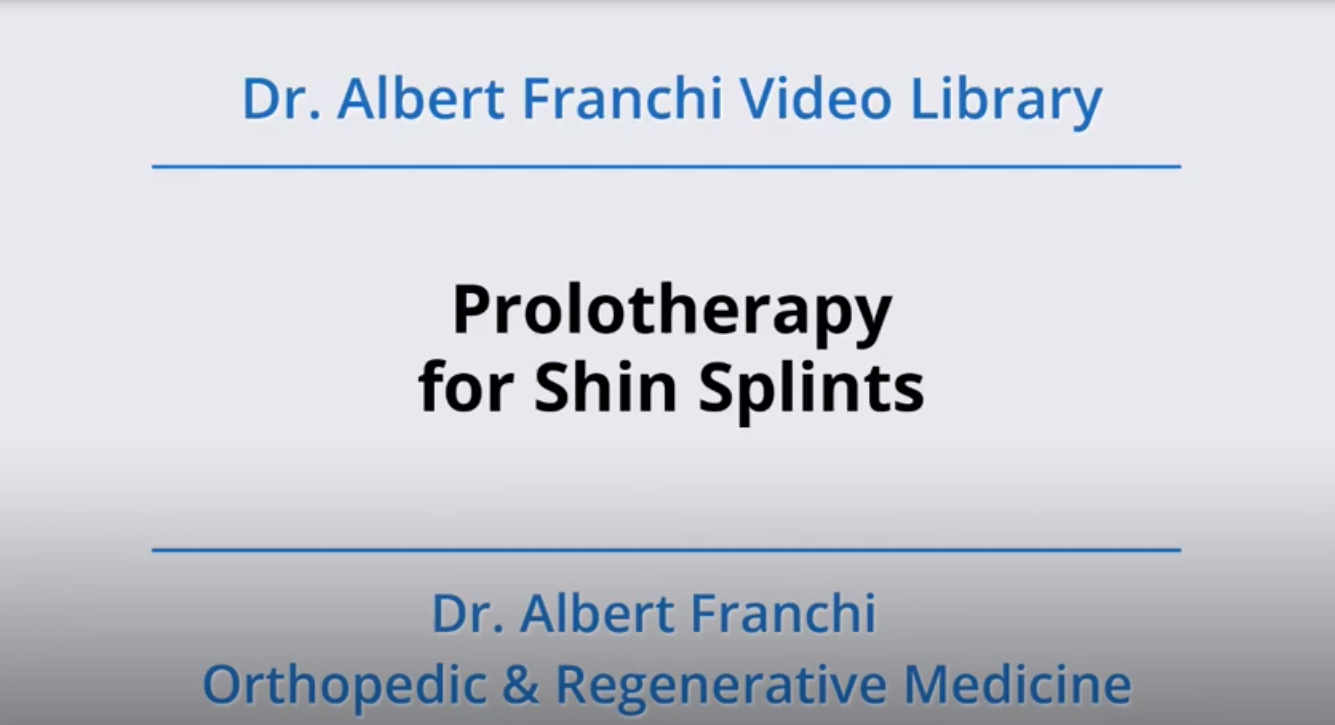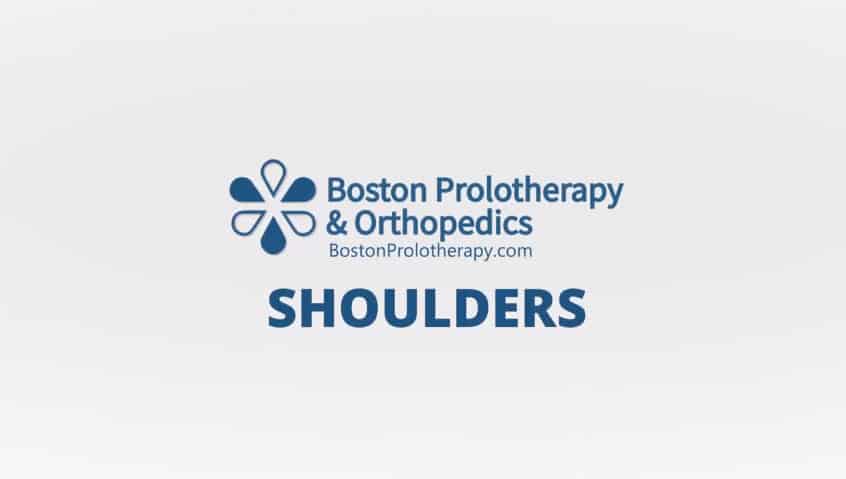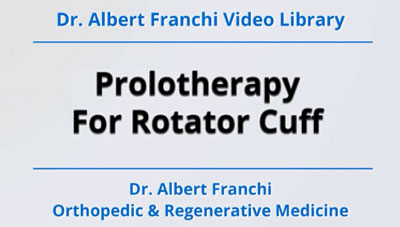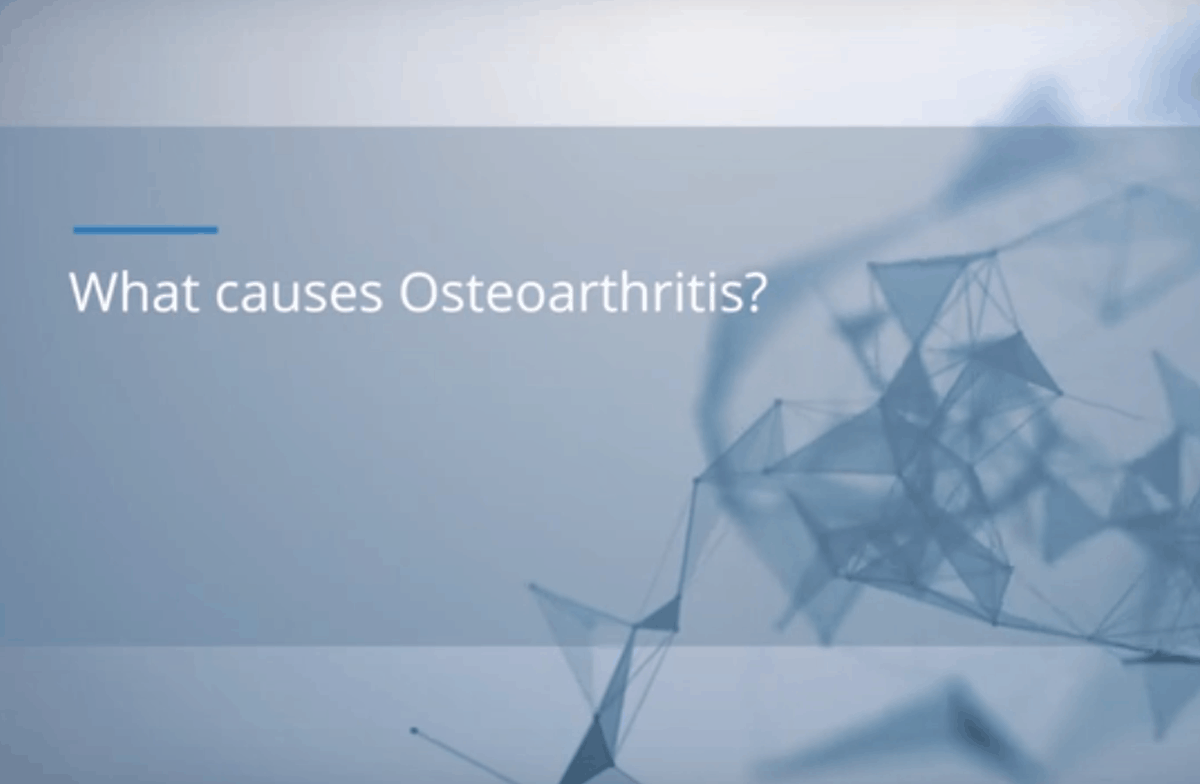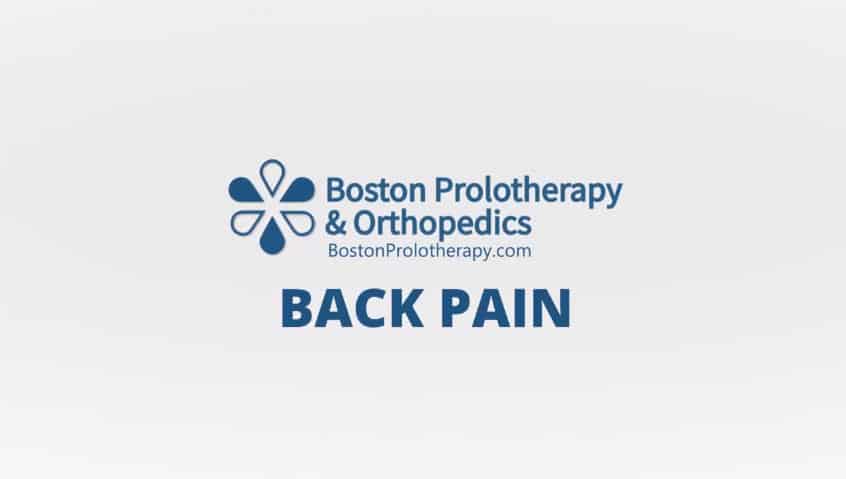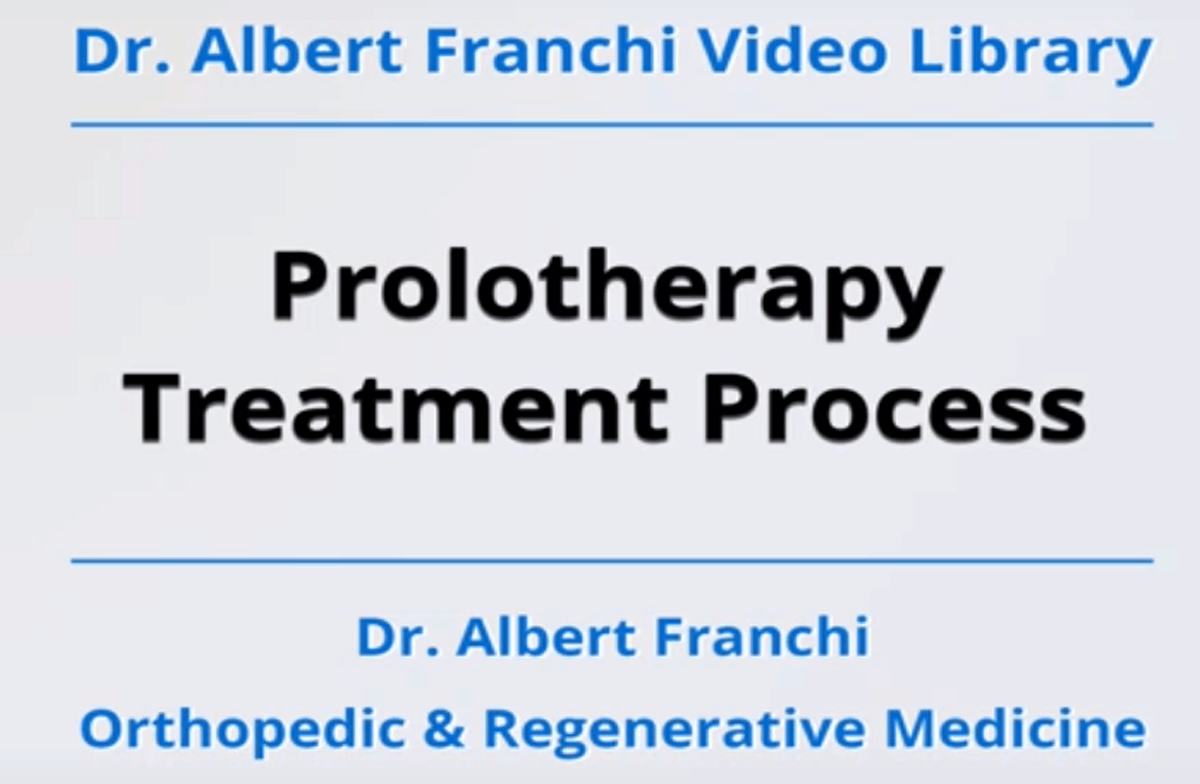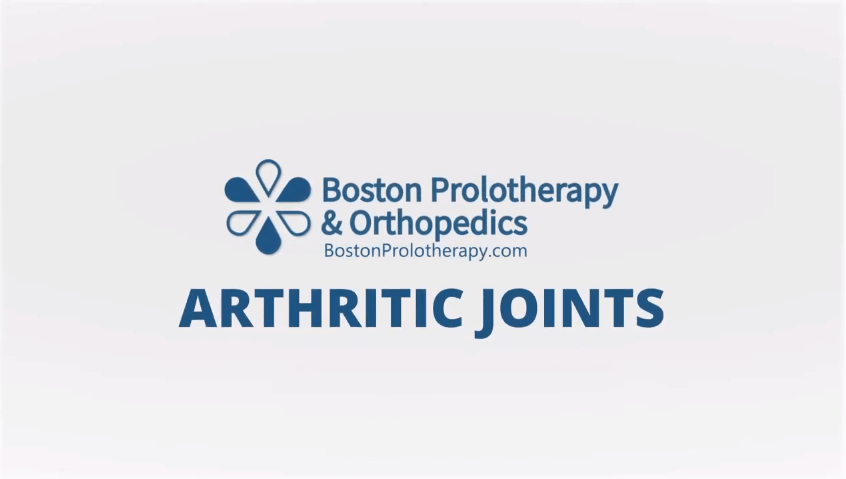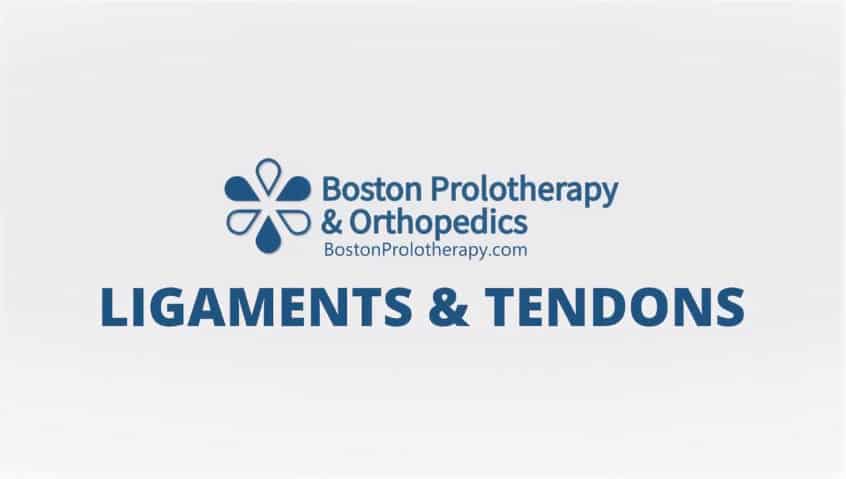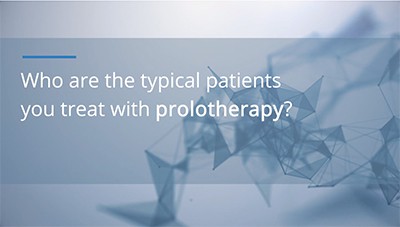Shin splints are micro tears of the muscles that attach to the tibia. They have to be distinguished from stress fractures, which could be caused by running and excessive use. Usually this can be done with an x-ray. And if that doesn’t prove positive, you can use an MRI to definitively diagnose a stress fracture. Usually stress fractures are treated with rest. However, shin splints can become chronic. They are due to the pain of the tearing of the attachment of the muscle to the tibia. Prolotherapy helps to heal these conditions in 90% of the cases. It only requires injections each week for five weeks and staying away from anti-inflammatories. You can still continue to exercise, and 90% of the time, you’ll have a good result.
What is Prolotherapy?
Shoulder Issues in Boston
Our practice treats patients who typically have the following shoulder related issues; arthritis, most rotator cuff tears as well as biceps ligament tears. Prolotherapy is not effective for adhesive capsulitis. When treated over a period of five weeks, 80% of our patients have found we have alleviated their pain.
The shoulder joint has the greatest range of motion of all the joints in your body. It is a complex joint with many layers, including bones, ligaments, tendons, rotator cuff, and muscles. These parts are susceptible to damage by degeneration, injury, and overuse.
Here are some common shoulder issues.
Dislocation
The shoulder is the most commonly dislocated joint in the body, caused by accidents, sports injuries, or falls. Your shoulder is a ball and socket joint, meaning that the top of the upper arm bone (humerus) is rounded like a ball. The ball fits into a cup-shaped socket in the shoulder blade. The shoulder becomes dislocated if the humerus fully or partially moves out of the socket.
Bursitis
Bursitis is the inflammation of the bursa, a tiny, fluid-filled sac that reduces friction between joints. The bursa gets inflamed when there is too much friction. This is common in people who perform repetitive actions, such as gardeners, athletes, and musicians.
Rotator Cuff Tears
The rotator cuff is a group of tendons and muscles in the shoulder that stabilize your arm and let you rotate your shoulder. Tears can occur suddenly due to injury, or develop slowly because of overuse or degeneration. You may have a rotator cuff tear if you have shoulder pain at night and
weakness when moving your arm.
AC Separation
An acromioclavicular joint separation is an injury to the ligaments that link the collarbone to the shoulder blade. The separation can result from a direct blow, such as when you play contact sports like football, hockey and rugby. You may notice a bump at the top of the shoulder, limited shoulder movement, or arm weakness.
Osteoarthritis
Osteoarthritis is the most common arthritis that affects the shoulder. This is a degeneration of the cartilage, which is the outer covering of bone. You may feel pain when you sleep, and limited range of motion that affects your ability to finish daily tasks.
How Prolotherapy Can Help Shoulder Pain
Many shoulder problems affect the soft tissues of the ligaments, muscles, and tendons. In this case, rest, pain medication, and ice and heat packs do little to relieve shoulder discomfort.
Prolotherapy, also called regenerative injection therapy, is a way of injecting an irritant solution into a tendon or ligament in order to cause a reparative inflammatory reaction to help repair the tendon and relieve pain.
Prolotherapy is especially effective for rotator cuff tears as it strengthens partially-torn tendons and ligaments. Additionally, osteoarthritis, AC separation, instability of the shoulder, and other shoulder issues respond well to prolotherapy.
Shoulder pain is a nuisance, particularly if it interferes with your daily life. Contact Boston Prolotherapy & Orthopedics today for relief.
Prolotherapy For Rotator Cuff
Rotator cuff tears can be healed with Prolotherapy about 90% of the time in selective cases. If you have a complete rupture of the rotator cuff, with retraction of the tendon, Prolotherapy will not help you. Also, if you have a large spur digging into the tendon, that needs to be shaved down before Prolotherapy is performed. A number of different people develop rotator cuff tears, but especially for those that work in the trades, people who lift weights, and people who engage in racquet sports, Prolotherapy has been effective. If it is suspected that a spur is digging into the rotator cuff, this can be detected with a simple x-ray. If you have to rule out a complete tear of the rotator cuff with retraction, an MRI is necessary.
Osteoarthritis
Back Pain
Back Pain Boston
Back pain is very uncomfortable for people of all ages, and can many times lead to depression. As we get older it is one of the primary reasons for people not being able to go to work. As we age many of us commonly complain of back pain because of degenerative disk disease. This affects parts of the lower back, including the vertebrae, ligaments, muscles, and nerves.
In many cases, back pain can be alleviated by a variety of treatments including correct body mechanics. Surgery is rarely used to treat pain in the lower back. If you are interested in easing back pain, you may be a candidate for Prolotherapy. This treatment by Dr. Franchi of Boston Prolotherapy & Orthopedics focuses on a series of injections to start the recovery process and promote healing. Dr. Franchi has helped hundreds of patient return to work.
Causes of Back Pain
The back is a series of discs, bones, tendons, ligaments, and muscles. If you have back pain, your medical provider will use imaging tests to determine the cause and the affected area. Common causes of the back pain include:
1. Structural Issues
The human spine features interlocking bones that are stacked on top of each other called vertebrae. The space between each vertebrae is occupied by protective tissue named discs. If the discs rupture, herniate, or bulge, you will experience back pain. People with degenerative disc disease will quite often develop sacroiliac instability which is a very common cause of lower back pain. Although Prolotherapy does not treat disc problems, it is very effective for sacroiliac instability.
2. Strain
Sleeping at an awkward angle, using the wrong form during workouts, and lifting heavy objects can result in a pulled muscle or ligament in your back. You can also strain back muscles from over-activity, such as prolonged sports sessions without intermittent rest.
3. Poor Posture
Many people spend hours every day hunched over their computers and develop back and neck pain. Maintaining proper posture and taking regular breaks from your computer, even for just a few minutes can help immensely.
Your work could also be placing you at a higher risk of developing back pain. Occupations such as construction, warehousing, landscaping, gardening, and working with patients in a nursing home are among the riskiest activities.
When to See a Physician
Many episodes of back pain can resolve after a few days or weeks. It is best to consult a physician if the pain is severe or ongoing. Back pain can be accompanied by other symptoms that warrant medical care, including:
1. Sudden Weight Loss
If you lose a lot of weight unexpectedly without trying, you should have your back checked by a physician.
2. Fever
Back pain that is accompanied by fever can indicate a severe infection. Sweats, chills, and other flu-like symptoms can also indicate an infection.
3. Trauma and Injury
If your back pain results from a car accident, sports injury, serious fall, or another severe trauma, you should immediately consult a doctor.
4. Numbness or Tingling Sensation
Shooting pain down your legs or arms is an indication of nerve compression in your spine, and you should call your physician as soon as possible.
5. Loss of Bladder Control
Loss of bladder control is an emergency and may indicate cauda equina syndrome. It requires immediate attention and you should go as soon as possible to an emergency room.
Back Pain Treatment
Some common treatments include:
1. Medication
There are many over-the-counter remedies available to relieve back pain. After working with your pharmacist and the pain persists, it could be time for a medical evaluation. Your physician may recommend analgesics, muscle relaxants, and NSAIDs to reduce inflammation. Some practitioners may use cortisone injections to relieve sciatica, but this is only a short term solution and treatment for pain relief.
2. Therapies
Physiotherapy is effective at improving strength and flexibility. A physical therapist will stretch your back muscles and ease your back pain. This type of treatment will be more effective when paired with low-impact exercises such as cycling and swimming. If your back pain is interfering with everyday activities such as tying your own shoes, getting dressed and working at your desk, it’s possible that your physician or massage therapist may recommend supportive devices.
At Boston Prolotherapy & Orthopedics, we have found an 80-90% success rate in using Prolotherapy for back pain arising from sacroiliac, cervical facet, and interspinous ligament instability. Prolotherapy treatment will promote the rejuvenation of the torn ligament and ease your back pain.
Prolotherapy Treatment Process
Walk me through the process.
When you come in, I examine you to make sure that prolotherapy is indicated. I may take an x-ray to make sure there’s not some other source of your pain that I can’t solve. Then, we use sterile technique, and I use a 50% dextrose solution with lidocaine so it doesn’t hurt as much. I give the injections in the appropriate areas.
The first office visit takes 15-30 minutes. But after that, once we know your problem, you could be in and out of the office in five minutes. I start my office hours at 7:00 a.m.
How do you know where to inject?
A lot of that comes with experience. I’ve had the advantage of being a classically trained orthopedic surgeon. So, I’ve seen the anatomy of 1000’s of people from the inside. So I tend to know where things are. I have very good eye-hand coordination and skills, to know where the tendons are supposed to be. So I can coordinate that with my judgment.
You have to apply the needle to the ligament/bone interface – where the ligament inserts into to the bone. You have to know where that is, and you have to know how deep to go with the needle. Obviously, experience counts.
Arthritic Joints
In general, the success rate for the treatment for arthritic joints is 80%. Most arthritic joints will require booster injections a year or two later after the initial successful treatment. We do this at a reduced frequency and cost. The reason for the booster injections is that these injections produce pain relieving fibrous tissue in the joint that will eventually wear out over time.
Ligaments and Tendons
The prolotherapy success rate for patients with torn ligaments and tendons is about 90%, and usually does not require further treatment once the tendon or ligament is healed; unless they are re-injured by a strenuous activity. During a patient’s treatment, we recommend modifying their activities.

